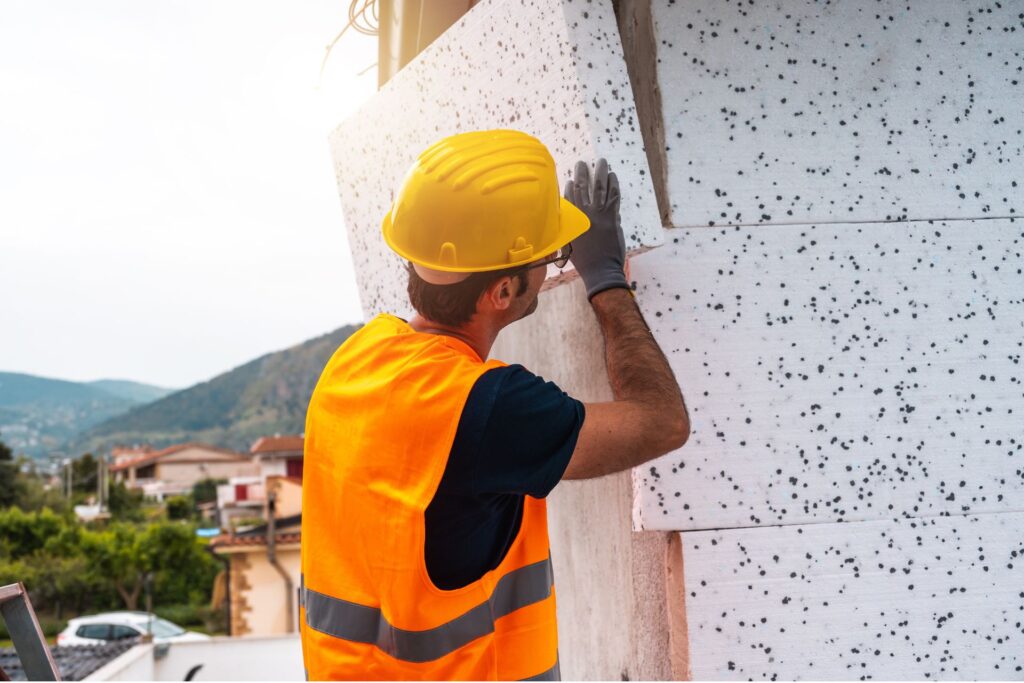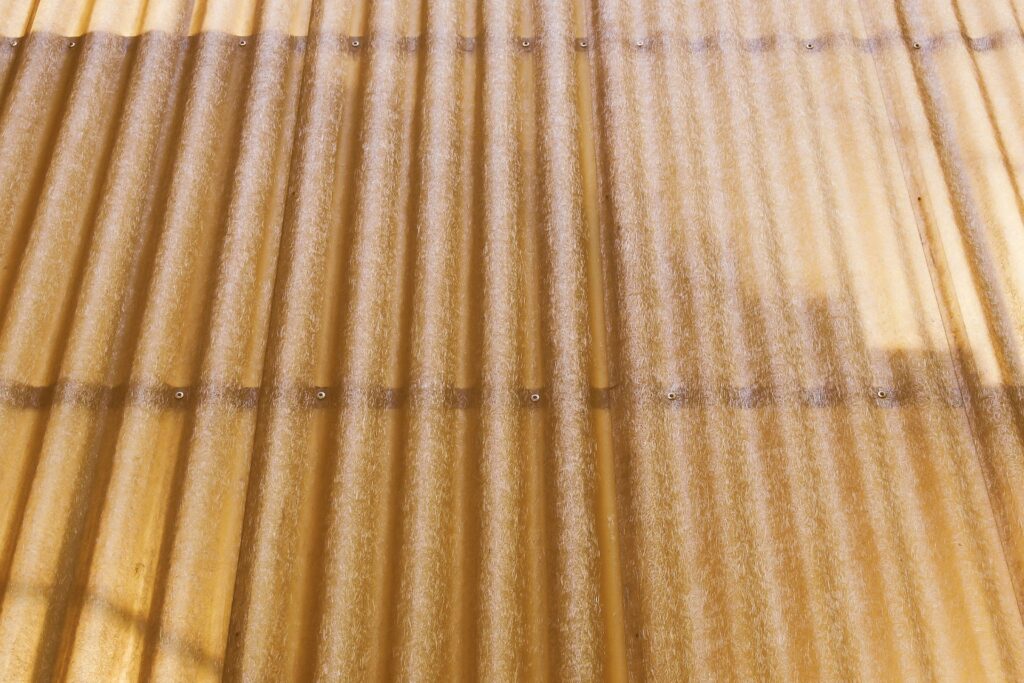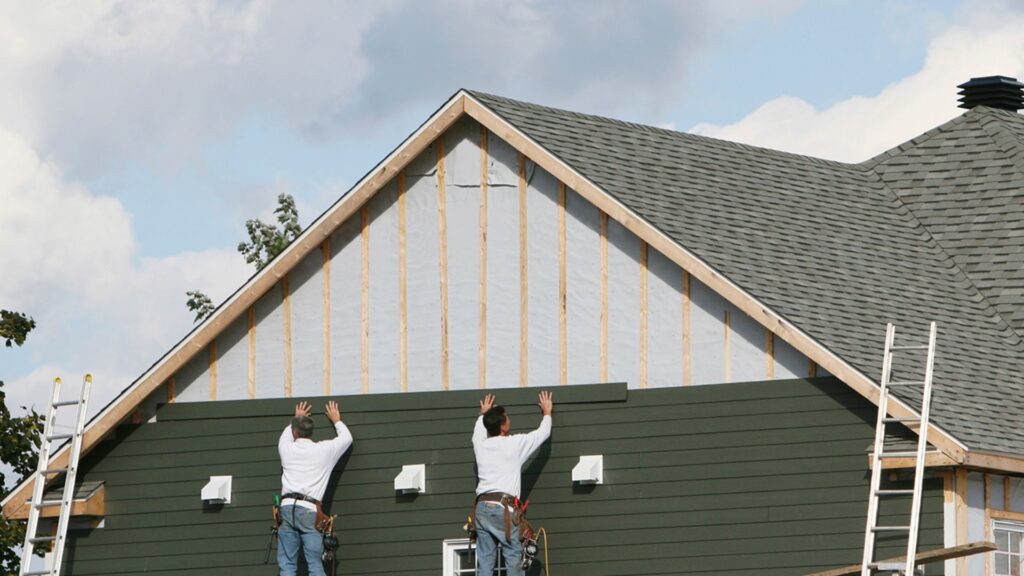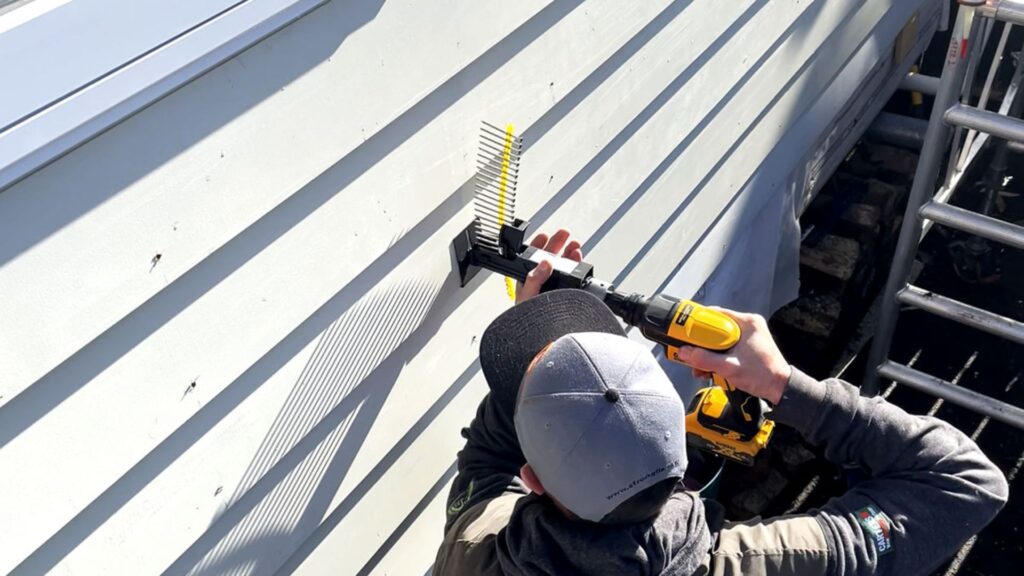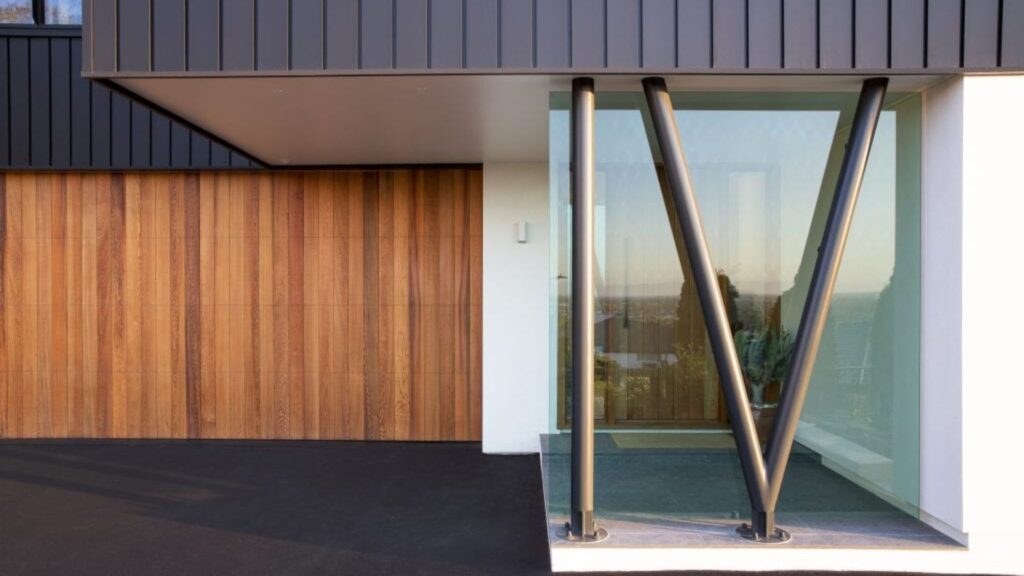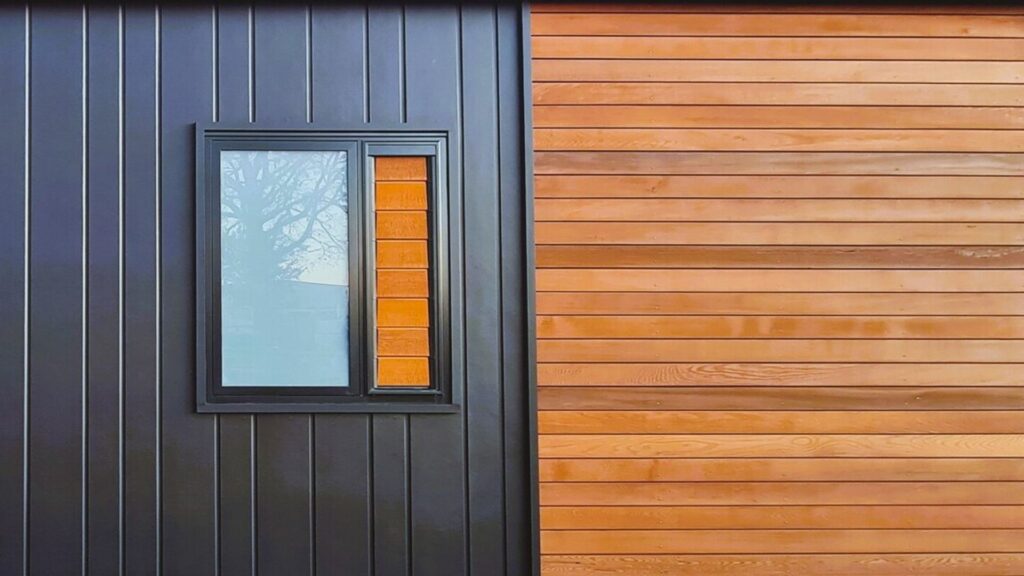Welcome to your comprehensive guide on cladding options and materials in New Zealand, a crucial component for protecting and enhancing your home. Cladding not only shields your residence from the diverse New Zealand climate, ranging from the sunny shores to the frosty southern peaks, but it also plays a pivotal role in insulation and aesthetic appeal. This guide will delve into various cladding materials available in the market, discuss their benefits and drawbacks, and provide you with essential tips on choosing the right cladding that aligns with both your home’s style and functional needs. Whether you’re building a new house or considering renovating an existing one, understanding the nuances of each cladding option will help you make an informed decision.
When selecting cladding in New Zealand, homeowners have several materials to consider, each with unique benefits and challenges. Key options include timber, known for its natural beauty and warmth; brick and stone, offering durability and a classic look; vinyl, which is cost-effective and low maintenance; fiber cement, celebrated for its resilience and versatility; and metal, ideal for modern designs with its sleek finish. Factors such as weather resistance, insulation, maintenance, and aesthetics should guide your choice to ensure the cladding not only enhances the building’s appearance but also performs effectively against local environmental conditions.
Understanding Cladding
Cladding refers to the application of one material over another to provide a skin or layer intended to control the infiltration of weather elements, or for aesthetic purposes. In building construction, the cladding may be made of wood, metal, brick, vinyl, or composite materials that can include aluminum, wood, blends of cement and recycled polystyrene, and wheat/rice straw fibers. This outer layer is critical in protecting the building from external environmental conditions while also enhancing its visual appeal.
Function of Cladding in Buildings
The primary function of cladding is to protect the building from adverse weather conditions like rain, wind, heat, and snow. By creating a barrier, the cladding system helps maintain a controlled environment inside the building, regardless of the external weather conditions. Another vital function of cladding is to provide thermal insulation; its materials are often designed to prevent heat transfer, which helps in maintaining an energy-efficient building that requires less heating in the winter and cooling in the summer.
Cladding’s Role in Weatherproofing and Insulation
Effective cladding is essential for the longevity and durability of a building. Weatherproof cladding protects structural integrity and interiors from moisture, reducing the risk of mold, algae, and damp issues. Moreover, it minimally impacts the internal living spaces while improving building efficiency. Insulation is another critical aspect, where cladding contributes significantly by reducing the need for additional heating and cooling systems, thereby cutting energy costs and environmental impact.
Historical Evolution of Cladding Materials in New Zealand
In New Zealand, the evolution of cladding materials has been particularly notable due to its unique climate and aesthetic values. Traditionally, materials such as timber were predominantly used, given their availability and the natural look they provided. Over the years, with advancements in technology and increased concerns about sustainability and durability, more innovative materials like fiber cement, and weatherboard have become popular. These materials not only offer durability and resistance to harsh weather conditions but also provide a modern look that can be adapted to various design aesthetics.
Understanding cladding and its critical role in building construction is essential for anyone involved in the architecture, building, or home renovation industries. Not only does cladding serve as the first line of defense against the weather, but it also plays a significant role in the aesthetic and energy performance of a building. As we continue to advance in building technologies, the materials and techniques used in cladding will evolve, offering better performance and more environmentally friendly options. This evolution underscores the importance of choosing the right cladding materials to meet both functional and aesthetic requirements in building construction.
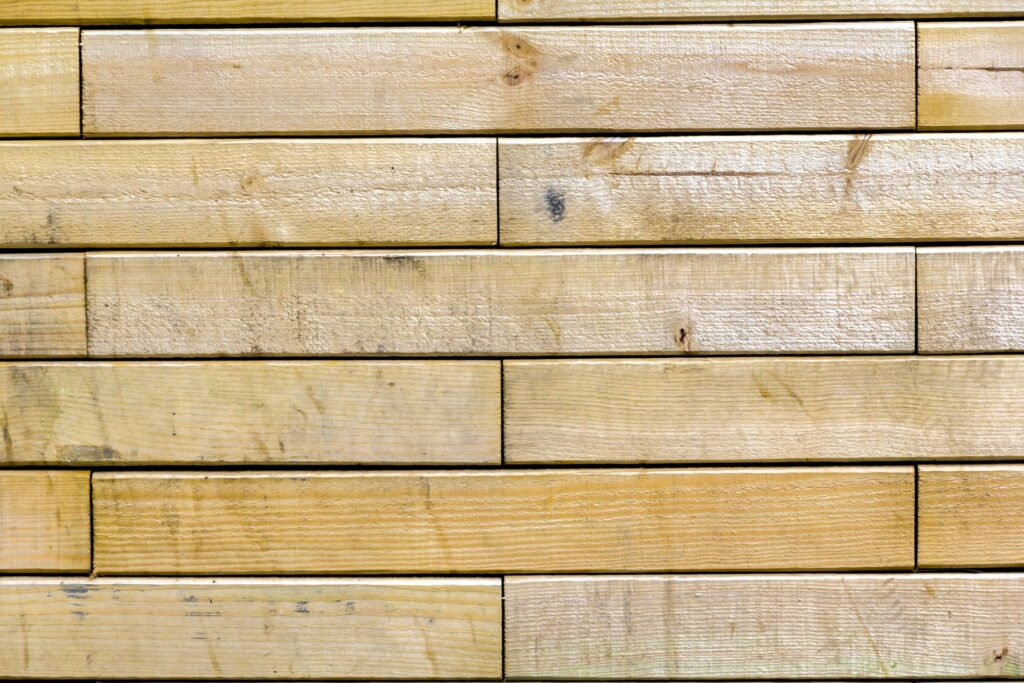
Types Of Cladding Materials
When it comes to enhancing the exterior of your home or building, cladding is an essential consideration not only for aesthetic appeal but also for protecting the structure from the elements. Cladding involves covering one material with another to provide a layer of skin over the walls. This article explores the various types of cladding materials available, particularly focusing on their characteristics, benefits, and maintenance requirements.
Timber Cladding: Natural Charm with a Warm Finish
Timber cladding remains a favored choice for its natural beauty and the warmth it adds to building exteriors. Common types used include Cedar, Pine, and Larch, each known for their distinct appearance and durability. Timber cladding offers several advantages such as ease of installation and a timeless aesthetic; however, it also requires regular maintenance to prevent decay, including treatment against pests and moisture. Regular staining or sealing is also necessary to maintain its appearance and longevity.
Brick and Stone Cladding: Sturdy and Timeless
Brick and stone cladding are popular in New Zealand for their robustness and the classic look they offer. This type of cladding is available in various styles and finishes, accommodating both traditional and modern design aesthetics. The main benefits of brick and stone cladding include excellent durability, minimal maintenance, and the ability to provide additional structural support to a building. While generally more expensive and heavier than other cladding types, their longevity and the minimal care required make them a worthwhile investment.
Vinyl Cladding: Cost-Effective and Low Maintenance
Vinyl cladding is a synthetic form of cladding that has gained popularity due to its cost-effectiveness and low maintenance requirements. It is resistant to weathering, decay, and insects, making it a practical choice for many homeowners. Additionally, vinyl cladding can mimic the appearance of other materials like wood or stone, offering versatility in design. However, it may not provide the same level of durability and can be susceptible to damage from extreme temperatures or impacts.
Fibre Cement Cladding: Modern and Resilient
Fiber cement cladding is made from a mix of cement, sand, and cellulose fibers, which gives it outstanding durability and resistance to fire, rot, and termites. Manufacturers like James Hardie are well-known for producing high-quality fiber cement products that can withstand harsh weather conditions. This type of cladding is particularly advantageous for areas prone to severe weather. Its installation process, though more complex than some other types, results in a robust, maintenance-friendly facade suitable for a variety of architectural styles.
Metal Cladding: Sleek and Contemporary
Metal cladding, using materials such as steel and aluminum, is celebrated for its sleek, modern appearance and its functionality in contemporary design. It is highly durable, typically lightweight, and offers excellent resistance to corrosion when treated properly. Metal cladding can also be coated or finished in various ways to prevent corrosion and to fit the aesthetic needs of the building. It’s particularly favored for commercial and industrial buildings due to its durability and minimal maintenance needs.
Choosing the right cladding material depends on various factors, including aesthetic preferences, climate, maintenance capabilities, and budget. Whether you prefer the natural elegance of timber, the robustness of stone, the affordability of vinyl, the resilience of fiber cement, or the modern appeal of metal, each material offers unique benefits and challenges. Properly selected and maintained cladding will not only enhance the appearance of your building but also protect it for years to come, making it a crucial aspect of construction and design projects.
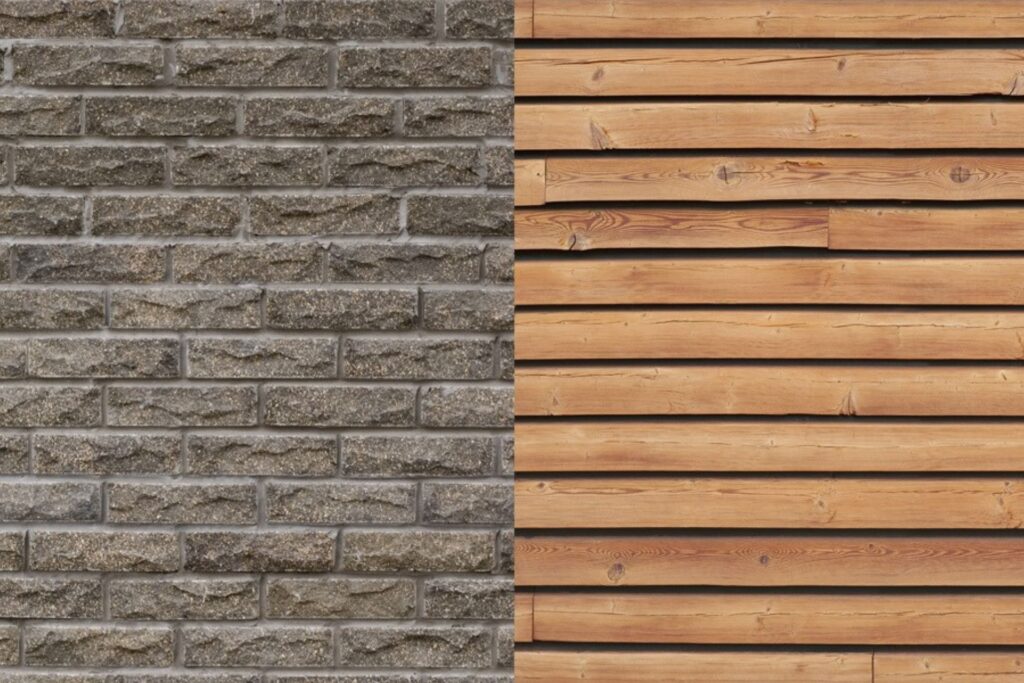
Choosing The Right Cladding For Your Home
Choosing the right cladding for your home is not just about picking a color or material that you like; it involves considering a range of factors that will affect the durability, appearance, and efficiency of your home. In this section, we’ll explore how to select the perfect cladding based on weather resistance, insulation properties, maintenance needs, and aesthetic appeal. Additionally, we’ll provide guidance on how to match the cladding with your home’s architectural style and offer practical tips on color selection and combinations.
Factors to Consider
1. Weather Resistance
The first and perhaps most crucial factor to consider is how well the cladding material can withstand local weather conditions. Whether you live in a region with extreme heat, cold, or moisture, the right cladding should offer protection against the elements. Materials like vinyl, fiber cement, and certain types of wood are popular for their ability to resist weather-related damage.
2. Insulation Properties
Cladding also plays a vital role in the thermal efficiency of your home. Materials like insulated vinyl siding or stone can provide additional thermal resistance, helping to keep your home warm in the winter and cool in the summer, which can lead to significant energy savings.
3. Maintenance
Another important consideration is the maintenance required to keep the cladding looking its best. Some materials, like brick or certain composites, are virtually maintenance-free, while others, such as wood, may require regular painting or staining to maintain their appearance and durability.
4. Aesthetic Appeal
Finally, the aesthetic appeal of cladding cannot be overlooked. The right cladding should complement and enhance the overall look of your home. It’s essential to choose colors and textures that align with the existing elements of your home’s exterior.
Matching Cladding with Architectural Style
Every home has a unique architectural style, whether it’s modern, traditional, craftsman, or colonial. The cladding should match and accentuate these architectural features. For instance, a modern home might look best with sleek, minimalist cladding such as large-format panels, while a traditional home might benefit from the classic look of horizontal siding or shingles.
Tips on Color Selection and Combinations
Selecting the right color for your cladding involves more than just picking your favorite shade. Consider the color schemes of the homes in your neighborhood and the natural surroundings. Neutral colors like grays, whites, and beiges tend to blend well with any environment but don’t be afraid to choose bolder colors if they enhance your home’s character.
Moreover, consider the use of combinations to highlight architectural features. Contrasting colors or complementary shades can be used for trim, doors, and shutters to create a cohesive and attractive exterior.
Choosing the right cladding involves a careful consideration of various factors that will influence not just the look, but also the functionality and longevity of your home. By taking into account the material’s weather resistance, insulation properties, maintenance needs, and aesthetic appeal, and by matching these elements with the architectural style of your home, you can make a choice that is both beautiful and beneficial. Whether you are building a new home or upgrading an existing one, a thoughtful selection of cladding can significantly boost your home’s curb appeal and overall value.
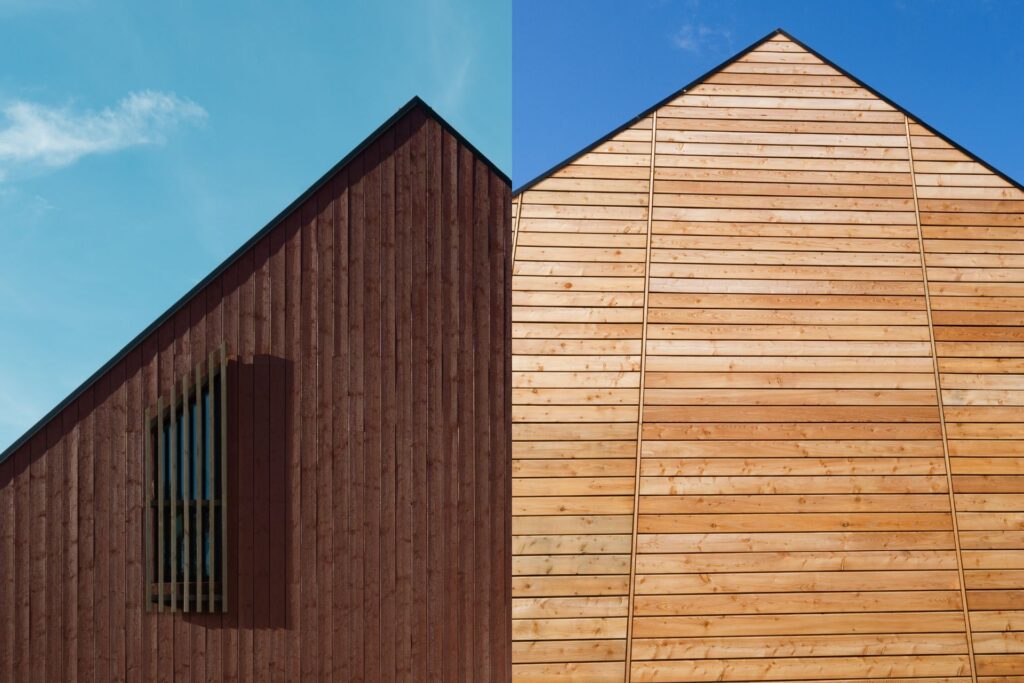
Sustainability And Eco-Friendly Options
When it comes to building design, the choice of cladding materials is critical not only for aesthetics and durability but also for the sustainability and environmental impact of the structure. In this section, we delve into the world of sustainable cladding options, highlighting the benefits of eco-friendly materials and the importance of considering the lifecycle environmental impact of these choices.
Overview of Sustainable Cladding Materials
Sustainable cladding materials are those that offer environmental benefits through their production, use, and disposal stages. These materials are typically sourced from recycled content or renewable resources, and designed to have minimal adverse environmental impacts. Some popular eco-friendly cladding options include:
Recycled Metal Cladding: Made from recycled steel or aluminum, this type of cladding is durable and recyclable at the end of its life.
Timber Cladding: When sourced responsibly, wood is a renewable resource that offers a classic aesthetic and natural insulation properties.
Fiber Cement Cladding: Composed of cement, cellulose fibers, and sand, fiber cement can be a more sustainable alternative to purely cement-based options.
Composite Cladding: Made from a mixture of recycled wood and plastics, composite cladding is durable and maintenance-free, often using waste products that would otherwise end up in landfills.
Benefits of Using Recycled Materials and Renewable Resources
Using recycled materials and renewable resources in cladding has numerous benefits:
1. Reduced Environmental Impact: Recycled materials decrease the demand for virgin resources, which helps conserve these materials and reduces the environmental impact associated with extraction and processing.
2. Energy Efficiency: Manufacturing products from recycled materials often requires less energy compared to producing them from raw materials. For example, recycling aluminum saves about 95% of the energy required to make the same amount of aluminum from its virgin source.
3. Waste Minimization: Utilizing recycled content helps reduce the volume of waste sent to landfills and supports the development of a circular economy.
4. Sustainable Management of Forests: When choosing renewable resources like wood, opting for suppliers who practice sustainable forestry can help ensure that the forests are managed responsibly, promoting biodiversity and reducing carbon footprints.
Lifecycle and Environmental Impact of Popular Cladding Choices
The environmental impact of cladding materials is determined by their lifecycle—from resource extraction through manufacturing, transportation, installation, maintenance, and disposal. Sustainable cladding choices are designed to minimize this impact at every stage:
Resource Extraction: Sustainable extraction methods and the use of recycled materials help preserve natural resources.
Manufacturing: Eco-friendly cladding materials are often produced using less energy and creating fewer emissions.
Transportation: Locally sourced materials reduce the carbon footprint associated with transportation.
Installation and Maintenance: Some sustainable cladding options require less energy-intensive installation processes and minimal maintenance throughout their life.
End of Life: Recyclable materials can be repurposed at the end of their lifecycle, reducing the need for disposal and the generation of construction waste.
In conclusion, the choice of cladding materials significantly impacts the sustainability of a building project. By opting for materials that are not only durable and aesthetically pleasing but also environmentally friendly, architects and builders can contribute to a more sustainable future. As we become more conscious of our environmental footprints, the role of sustainable cladding options becomes increasingly vital in the construction industry.
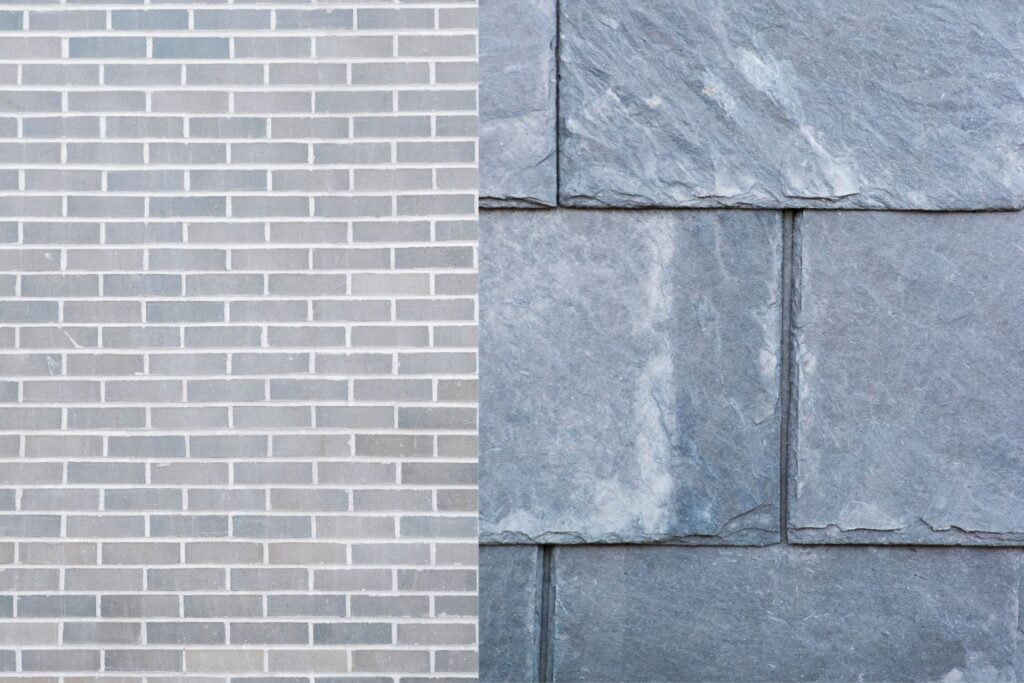
Installation And Maintenance
When considering the installation and maintenance of cladding, it’s essential to understand the variety of factors that contribute to its effectiveness and longevity. Cladding not only enhances the aesthetic appeal of a building but also plays a crucial role in its structural integrity and energy efficiency. Below, we’ll provide a comprehensive guide on the installation process, maintenance tips, and what to watch out for to ensure your cladding stays in top condition for years to come.
Installation Process: DIY vs. Professional Installation
DIY Installation
For those considering a DIY approach to cladding installation, it’s vital to assess your skill level and the complexity of the project. Some types of cladding, like vinyl or certain lightweight composites, can be more accessible for DIY enthusiasts due to their interlocking designs and relatively simple installation requirements. Here are a few steps and considerations:
1. Preparation: Ensure the wall surfaces are clean, dry, and flat. Measure and plan the layout meticulously to avoid unnecessary cuts and adjustments.
2. Tools and Materials: Gather all necessary tools and materials beforehand. Commonly needed tools include a tape measure, level, saw, and drill.
3. Safety Measures: Use appropriate safety gear like gloves, goggles, and helmets. Safety cannot be overstated, especially when working at heights.
However, DIY installation has its limitations and risks, including potential issues with warranty if the installation is not up to professional standards.
Professional Installation
Professional installation is recommended for most types of cladding, particularly materials that require specialized skills, such as stone, brick, or high-end metal panels. Professionals can ensure:
Accuracy: Experts are equipped to handle complex patterns, alignments, and structural considerations.
Speed: Experienced installers can complete the job faster with a higher quality finish.
Warranty and Compliance: Professional installation often comes with warranty protection and ensures compliance with local building codes and regulations.
Maintenance Tips for Different Types of Cladding
Vinyl Cladding: Easy to maintain, usually requiring just a wash with soapy water to remove dirt and debris. Check periodically for any signs of cracking or discoloration.
Wood Cladding: Requires more maintenance to prevent weathering, rot, or insect damage. It’s advisable to treat wood cladding with preservatives and stains to enhance durability and maintain its natural beauty.
Metal Cladding: Inspect for any signs of corrosion or oxidation. Depending on the metal type, applying protective coatings can be beneficial to counteract these effects.
Brick and Stone Cladding: Generally low maintenance but check for mortar deterioration or movement in the stones or bricks, which might require repointing.
Longevity and Common Issues to Watch Out For
The longevity of cladding depends largely on the material used and the quality of installation. For instance, vinyl can last up to 30 years, while high-quality brick or stone cladding can last for over 50 years if properly maintained. Common issues to monitor include:
Moisture Damage: Improper installation can lead to water seepage, which can cause structural damage over time.
Thermal Expansion and Contraction: Some materials can expand or contract with temperature changes, potentially leading to cracks or buckling.
UV Degradation: UV rays can fade or weaken certain types of cladding, such as those made from polymers or composites.
In summary, whether you opt for DIY or professional installation will largely depend on the type of cladding material and your own skills and resources. Regular maintenance tailored to the specific needs of the cladding material will ensure its longevity and performance. Keep an eye out for common issues that could affect the structural integrity and aesthetic value of your building. This proactive approach will not only maintain the building’s appearance but also safeguard your investment in the long run.
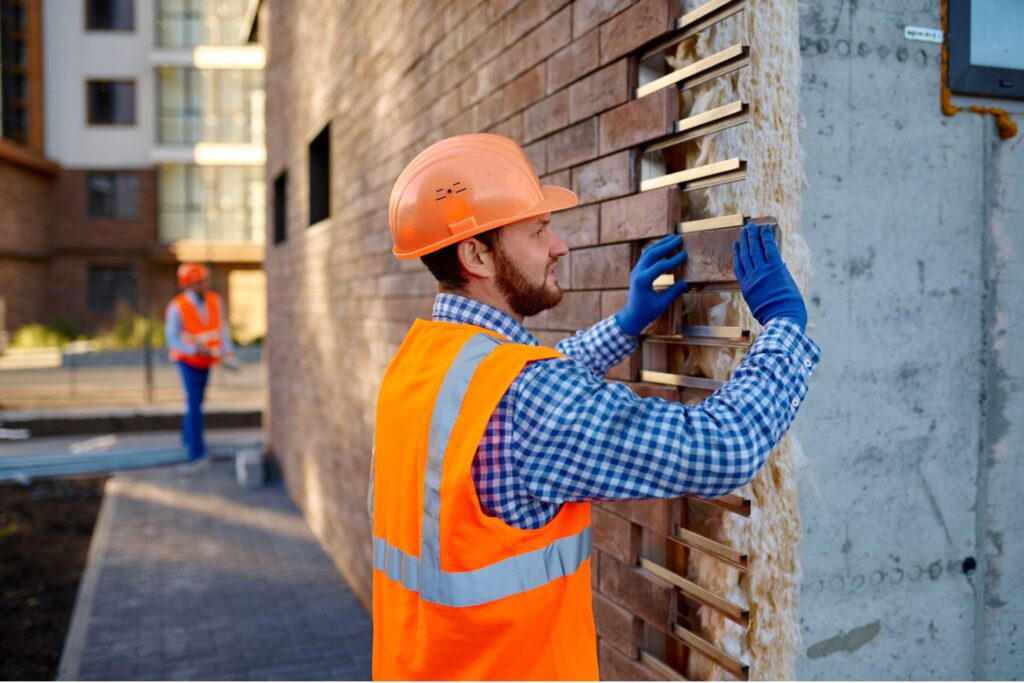
Regulations And Compliance
When it comes to building or renovating in New Zealand, understanding and adhering to the local building codes, especially those related to cladding, is essential. Cladding not only enhances the aesthetic appeal of a structure but also plays a crucial role in protecting it from environmental factors. This guide provides a thorough overview of the regulations you must follow, strategies for ensuring compliance, and resources for additional support.
Overview of New Zealand Building Codes Relevant to Cladding
New Zealand’s building codes are comprehensive documents designed to ensure that all construction work meets the highest standards of safety and durability. When it comes to cladding, these codes specify the materials and methods that can be used, taking into consideration factors like fire resistance, weatherproofing, and thermal efficiency. It’s important for building owners, contractors, and architects to be familiar with these requirements to ensure that all cladding work is both safe and legally compliant.
The specific section of the building code that addresses cladding includes details on the types of materials that are permissible, the installation techniques that need to be followed, and the performance standards that the cladding must meet. For example, external cladding must provide adequate resistance to moisture ingress, must support thermal efficiency for the building, and must also comply with fire safety regulations.
How to Ensure Compliance with Local Regulations
Ensuring compliance with building codes can seem daunting, but there are several steps that stakeholders can take to streamline this process:
1. Thorough Planning and Design: Engage with qualified architects and designers who are familiar with New Zealand’s building codes related to cladding. They can help design a cladding system that not only meets all regulatory requirements but also fits your aesthetic and functional needs.
2. Use of Approved Materials: Always choose cladding materials that are compliant with New Zealand standards. Using non-compliant materials can lead to legal issues and costly remediation down the line.
3. Regular Inspections: Throughout the construction or renovation process, regular inspections by certified professionals can help catch and rectify any deviations from the building code before they become significant issues.
4. Documentation and Record Keeping: Keep detailed records of all construction activities, especially those related to cladding. This documentation can be crucial if you need to prove compliance in the future.
Resources for Further Guidance
For those looking for further guidance on cladding and compliance with New Zealand building codes, several resources are available:
NZ Building Authority: The NZ Building Authority website offers extensive documentation on building codes and standards. It’s a primary resource for anyone involved in construction in New Zealand.
Local Council Websites: Many local council websites provide specific information about regional differences in building regulations, which can be crucial for compliance.
Professional Associations: Organizations such as the New Zealand Institute of Architects (NZIA) offer support and advice for professionals in the industry, ensuring that the latest standards and best practices are easily accessible.
By understanding and adhering to the detailed requirements set forth in New Zealand’s building codes, stakeholders can ensure that their cladding not only enhances the appearance and efficiency of their buildings but also complies with the strictest safety standards. Utilizing the available resources and ensuring thorough compliance can lead to successful and lawful construction projects.
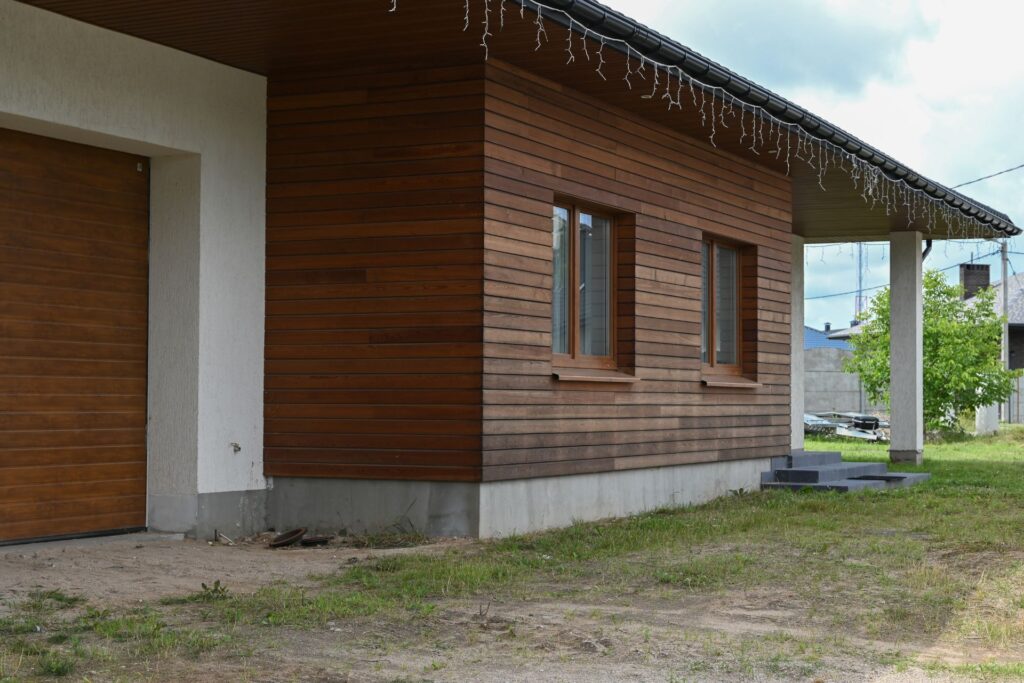
Cost Considerations
When planning to clad your building, whether for aesthetic upgrades or structural protection, understanding the costs involved is crucial. This comprehensive guide explores the approximate cost range for each type of cladding material, assesses the return on investment (ROI) of different cladding options, and offers practical budgeting tips for your cladding projects.
Approximate Cost Range for Each Type of Cladding Material
Cladding materials vary widely in cost, influenced by factors such as durability, aesthetic appeal, and ease of installation. Here’s a quick rundown of common cladding materials and their associated costs:
1. Vinyl Cladding: Known for its affordability and ease of maintenance, vinyl cladding typically ranges from $3 to $8 per square foot.
2. Wood Cladding: Offering a classic look, wood cladding costs can vary significantly, usually between $5 to $10 per square foot, depending on the type of wood.
3. Brick Cladding: Highly durable and low maintenance, brick cladding is more expensive, often costing between $12 to $20 per square foot.
4. Stone Cladding: Stone offers a premium aesthetic but at a higher price, typically ranging from $15 to $30 per square foot.
5. Metal Cladding: Known for its modern look and durability, metal cladding costs can range from $6 to $12 per square foot, depending on the metal type.
Understanding these cost ranges helps in selecting a material that fits both your budget and your architectural vision.
Cost vs. Value: Evaluating the ROI of Different Cladding Options
Investing in cladding should not only be about the initial cost but also the long-term value. Some materials, while more expensive upfront, may offer greater durability and less maintenance, which can be cost-effective over time. For instance, stone and brick cladding, despite their higher initial costs, typically require less upkeep and can enhance the property’s resale value significantly. In contrast, cheaper options like vinyl, while cost-effective initially, may not add as much to the property’s market value and might need more frequent replacements or repairs.
Evaluating the ROI involves looking at the lifespan, maintenance needs, and how much value the cladding adds to your property from a resale perspective. This approach helps in making an informed decision that balances cost efficiency with aesthetic and functional benefits.
Budgeting Tips for Cladding Projects
Effective budgeting is key to managing a successful cladding project without financial strain. Here are several tips to keep your project on budget:
1. Get Multiple Quotes: Always seek several quotations to ensure competitive pricing and quality service.
2. Consider Phasing Your Project: If budget constraints are tight, consider phasing the project to spread out costs.
3. Account for Additional Costs: Include costs for preparation work, installation, and potential unforeseen expenses in your budget.
4. Choose the Right Contractor: Selecting a skilled contractor can prevent costly mistakes and ensure that the installation is done correctly the first time.
By understanding the full scope of cladding costs, evaluating their long-term value, and employing strategic budgeting, you can ensure that your cladding project enhances your property both aesthetically and financially.

FAQs: About Cladding Options And Materials NZ
Conclusion
When discussing building materials, particularly cladding, it’s crucial to understand the importance of selecting the right type. The appropriate cladding material enhances both the building’s aesthetic appeal and its functional longevity. Whether it’s the rustic charm of wood, the sleek modernity of metal, or the traditional elegance of stone, the cladding should complement the building’s architectural style while addressing practical needs such as durability, maintenance, insulation, and environmental resistance. Consulting with professionals like architects and cladding specialists is vital; they provide insights tailored to your project’s requirements, ensuring that the material choice aligns with industry standards and local regulations. By carefully balancing aesthetics with functionality and seeking expert guidance, you ensure that your building’s cladding is not only visually appealing but also durable and efficient.
Find A Cladding Specialist Near You
About the Author:
Mike Veail is a recognized digital marketing expert with over 6 years of experience in helping tradespeople and small businesses thrive online. A former quantity surveyor, Mike combines deep industry knowledge with hands-on expertise in SEO and Google Ads. His marketing strategies are tailored to the specific needs of the trades sector, helping businesses increase visibility and generate more leads through proven, ethical methods.
Mike has successfully partnered with numerous companies, establishing a track record of delivering measurable results. His work has been featured across various platforms that showcase his expertise in lead generation and online marketing for the trades sector.
Learn more about Mike's experience and services at https://theleadguy.online or follow him on social media:


